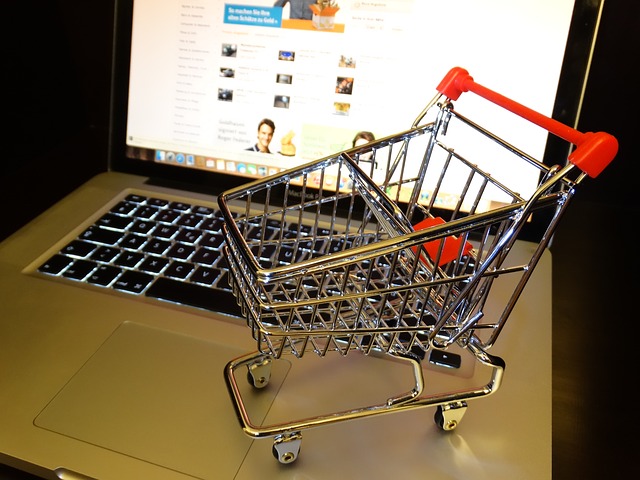
There seems to be a myth among retailers that brick brands and click brands can’t thrive in the same space. While the traditional shopping model that retailers once knew has drastically shifted, and some retailers have been slow to adapt to consumer preferences, many have taken a new approach to the shopper experience.
The biggest shift comes from the in-store and online channels converging — with each more focused on what the consumer wants out of a total retail experience.
Web and mobile offerings are now table stakes for traditional retailers, while many e-commerce companies like Amazon, Warby Parker, Fabletics and others are opening brick-and-mortar shops. Retailers poised to win are those that put customer experience at the center of their strategies. They are investing in digital, mobile and omnichannel strategies, and doing it all while focusing on the consumer.
We have seen traditional retail giants like Walmart take similar strides. With its acquisition of Jet.com and Bonobos, it is boosting its online portfolio while also obtaining more tech talent to help further the digital goals of the company.
Similarly, Amazon has gone from an e-commerce behemoth to making moves to gain a larger portion of in-store retail sales.
Both Amazon and Walmart have figured out something big. They can each break into the other’s territory by providing an excellent omnichannel shopping experience. The key connection between the two? Mobile.
It’s about integrating the two experiences, online and in-store, in a new way. Other brands are jumping on the bandwagon as they figure out their own gap in customer experience and begin to build a more cohesive shopping journey for their audience.
Here are a couple of key areas that all retailers should keep in mind as they look to level up their experience and activate shoppers in new ways.
Embrace Consumer Habits
At RetailMeNot, we actively evaluate behavior tied to channel, geo-location and promotional preferences when a consumer opts in to sharing. By evaluating these keys areas, we are able to better keep a pulse on what our most avid users need throughout their shopping journey.
The industry has watched several once-loved brands flounder because of an inability to innovate as quickly as consumer preferences were changing (think Blockbuster and RadioShack). At the same time, new experiential online brands like Netflix embraced consumer habits. Another example is Apple, a brand that rose to prominence prior to the advent of e-commerce and did it again during the last decade by adapting its model to meet the needs and lifestyles of its audience.
For brick-and-mortar stores, well-executed, personalized experiences will be paramount to maintaining traffic. Most direct competitors in retail have undifferentiated customer experience, yet some online-only retailers far outpace traditional retailers in this realm.
Stores opened by Warby Parker and Bonobos are staffed to meet a showrooming mindset, catering to the likelihood that customers are there more to touch and feel than to buy online. We’ve also seen names like Best Buy take the reins of its own turnaround by evolving its in-store experience to meet the needs of its audience. The consumer electronics retailer is now more nimble in its customer experience strategy, realizing that price is a prime consideration in their category. The brand is now winning against competitors because of its ability to offer advice, convenience and service to consumers who prefer to browse in-store and buy online.
See:TWICE’s Top 100 Retailing Giants Remain Nimble
Additionally, the recent announcement that Amazon is buying Whole Foods is another reminder to all retailers that Amazon’s go-to-market strategy is a total retail strategy, not just an online strategy. This is something for both traditional and e-commerce brands to keep in mind as they engage with today’s consumer.
Use Omnichannel to Fill Gaps
The goal of an omnichannel strategy is a consistent customer experience — across mobile, tablets and brick-and-mortar stores. But the execution can be much more challenging than just ensuring that your brand is present on all of these channels. If you aren’t doing it well, it will be noticed.
There are positive economic indicators showing that in-store shopping is steady. However, a proliferation of store growth in the past two decades resulted in nearly 1 million new physical retail stores. At the same time, online shopping grew exponentially: In June 2000, just 22 percent of Americans reported having made a purchase online; by December 2016, nearly 80 percent of Americans were shopping online — with 15 percent doing so on a weekly basis.
A few other things have changed too: Customers are adapting and embracing new omnichannel initiatives such as “buy online, pick up in store” (BOPIS), and competition isn’t limited to verticals anymore. BOPIS has also paid off for retailers that need to compete with e-commerce sites offering free shipping or other incentives.
We’ve seen this in our own data with consumers showing a preference for omnichannel content and savings. They are in control, and it’s up to the retailer to make it super easy for them to shop where they want, how they want and in their channel of preference. Because of this demand in 2016, we saw retailers issuing 80 percent more omnichannel offers.
Traditional retailers can use these offers and deals on mobile to help drive footfall in their mall and shopping centers. Additionally, malls can no longer be warehouses for product. Brands that are succeeding in this space, like Nordstrom, offer quick shipping from any of their retail locations when something is out of stock at one location. This provides a more seamless experience for customers.
What’s next for retailers, both online and in-store, will be determined by their ability to flex to local demands, relevancy and the mobile shopper who is active in all channels, not just one. Consumers will continue to adopt new preferences and habits as our digital environment becomes more mature, and it is up to brands to become more agile and flexible in their approaches.
By being customer centric and picking the right partners in the mobile retail space, retailers will be able to move more quickly to innovate. New technologies and consumer demands will continue to impact the way consumers browse, shop and purchase items, but the seamless convergence of real life and digital life will remain the key to solving these challenges.













